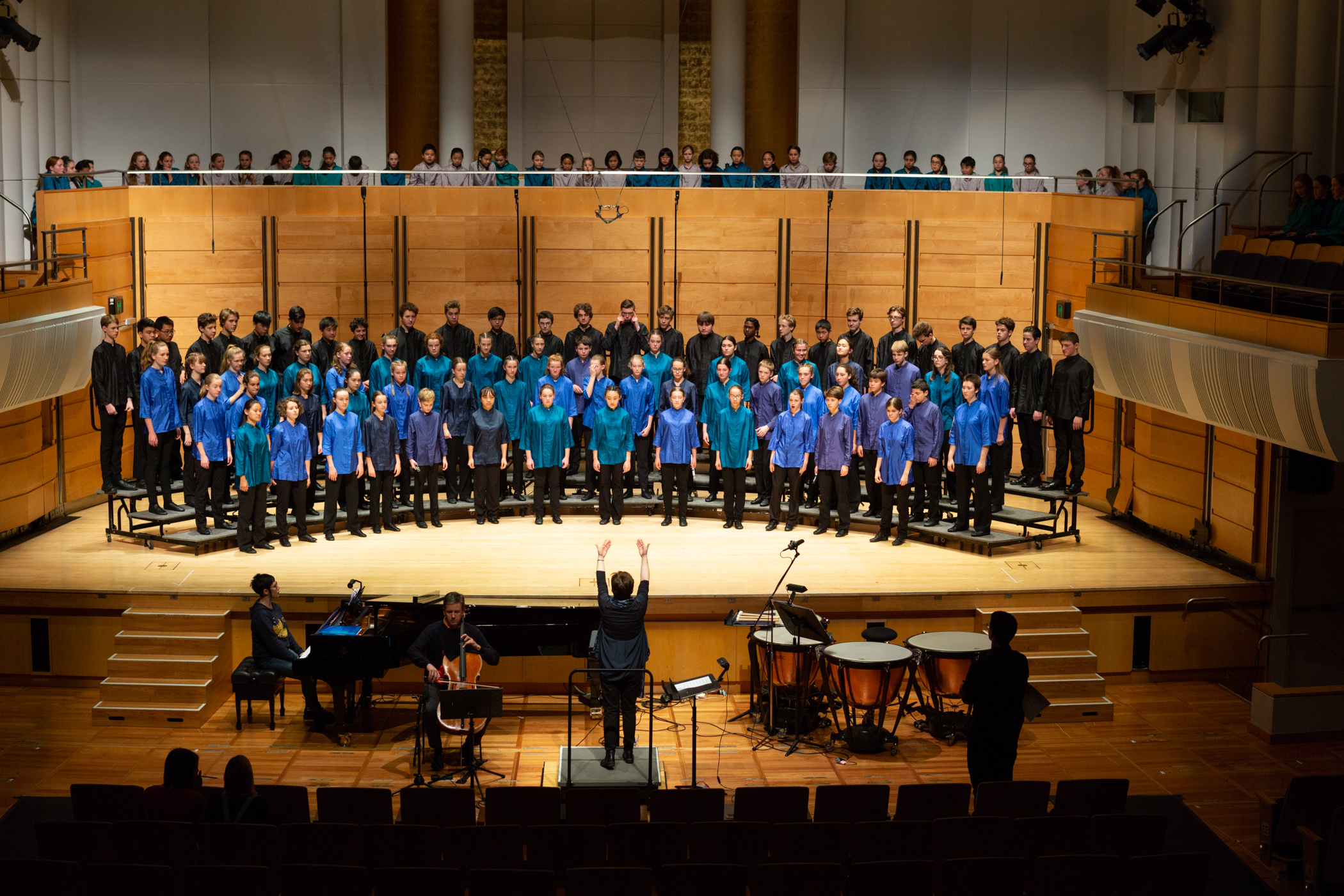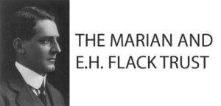Moments That Shaped Australia – Programme Notes
by composer, Dan Walker
World Premiere performed by The Sydney Children’s Choir
City Recital Hall, Sydney, 14 June 2018
INTRODUCTION
In the two hundred and something years that white Europeans have occupied Australia we as a nation have had something of a colourful if not chequered history. There have been many identifiable and specific moments that have come to define us whether we like it or not; moments that have both united and divided us, brought us closer together in times of mourning, and in celebration.
The five moments that comprise this work are by no means definitive; indeed, the open nature of the title of the work suggests there may be more to add to the canon, but they are stories we should all be familiar with. Because of this I have chosen not to recreate these moments as historical accounts, but rather tell a particular story that I feel has more of a humanist connection; a specific viewpoint from within each of these moments in history that seeks to frame them in the most positive light I can.
As a listener you may also notice that the moments are presented in chronological order.
The use of three different choirs from within Sydney Children’s Choir; Senior Choir, Junior Performing Choir and the Young Men’s Choir, presented me with a wonderful palette from which I could draw a rich variety of colours. I enjoyed pairing each of these choirs off with their own particular movement, as well as utilising their combined sound in the opening and closing moments of the work.
BRITISH COLONISATION
A New Sky
It would be impossible not to recognise the arrival of white Europeans and their subsequent occupation as a defining moment in our history. As we now learn a different and far more balanced account of those early years of colonisation, we also discover heart-warming stories of friendship and understanding.
One of these is the story of William Dawes, a young officer within the first fleet and the appointed Astronomer, and Patyegarang, a Cammeraygal woman. As a stargazer Dawes would often remove himself from the European settlements and its artificial lights, taking up position at what is now known as Dawes Point. From here, secluded from the quickly expanding European occupation, Dawes established relationships with the local harbour people, learning their language and documenting much of this in several journal volumes.
A pivotal moment for Dawes came when he was asked to accompany a reprisal attack party after a white officer was killed by a group of local men. Dawes refused to be a part of the revenge killing, returning to England not long after. While the relationship between the young astronomer and Patyegarang has been romanticised over the years, Dawes’ connection with the local people is a story of cohabitation and comradery, providing us with a vast amount of insight into the way of life of the traditional inhabitants of Sydney harbour.
WOMENS SUFFRAGE
The Trials of a Pioneer
Much has been written about the campaign for women’s suffrage which led to the passing of the Constitutional Amendment (Adult Suffrage) Act in 1894. This legislation was the result of a decade-long struggle to include women in the electoral process. The key figure in this campaign was Mary Lee, secretary of the Women’s Suffrage League, who agitated for change in the form of letters to magazines and newspapers, public speeches and organised rallies. The text for this work The Trials of a Pioneer draws on speeches and articles by both Mary Lee and other key politicians penned during the leadup to the legislation passing. From these excerpts we get a glimpse not only into the dogged determination and tireless campaigning of Ms Lee, but also the respect she garnered during her fight, from men and women alike. The first South Australian in which women could participate was held in 1896. The female presence was remarked upon by many newspapers, including the Adelaide Observer, which said: Women were everywhere, and their presence … no doubt had a refining influence.
Never have we had a more decorous gathering together of the multitude than that which distinguished the first exercise of the female franchise on Saturday April 25, 1896.
MABO AND NATIVE TITLE
The Journey of Tagai
On May 20, 1982, a group of Meriam men led by Eddie Kioki Mabo brought action against the state of Queensland and the Commonwealth of Australia in the High Court, claiming ‘native title’ to the Murray Islands in the Torres Strait. This case challenged the existing legal system primarily on the assumption that Aboriginal and Torres Strait Islander peoples had no concept of land ownership before the arrival of British colonisers in 1788. On June 3, 1992, six of the seven High Court judges upheld the claim and ruled the lands of this continent were not terra nullius when European settlement occurred, and that the Meriam people were ‘entitled as against the whole world to possession, occupation, use and enjoyment of the lands of the Murray Islands’. The Mabo decision and the legal uncertainty that followed in its wake prompted the passing of the Native Title Act 1993, providing recognition and protection of native title.
While I was researching this topic and learning of the Meriam people, I discovered a beautiful story about Tagai, the Torres Strait’s most celebrated hero. The story tells of a great sea voyage Tagai took along with twelve companions. Not long into the journey, the twelve drank all of the water and ate all of the food that Tagai had prepared for them. Furious, he cast them angrily into the sea, then sets them up in the northern night sky, far away from him, where they now rest as the Pleiades and Orion constellations. This story is a reminder for the Meriam people that sharing, and thoughtfulness are the foundations for everyday life, and that one cannot take what is not rightfully theirs. I felt these sentiments echoed Eddie Mabo’s fight beautifully.
A huge thank you and acknowledgement must go to Benny Bua Mabo for his consultation in the writing of this piece, and his translation of the text into Meriam Mir.
THE PORT ARTHUR MASSACRE
Port Arthur Memorial
A garden with a pond commemorates the victims of Australia’s worst mass murder, which occurred at Port Arthur in Tasmania in April 1996. At the end of that day, 35 people had been killed and another 20 wounded; tourists, mothers and young children, and people the killer had known most of his life were among the dead. This event shook the entire nation, leading to an urgent review of its gun laws.
When listening to this particular movement I was striving to put the listener within the serene sanctuary of that garden in Port Arthur; the pure intonation of the tone chimes which open the piece serving as a call to meditation and reflection. The text I have chosen for the work is the poem inscribed on the memorial itself, written by the late Tasmanian author Margaret Scott, which sits alongside the names of all those who were gunned down that day in April 1996.
May we who come to this garden cherish life for the sake of those who died.
Cherish compassion for the sake of those who gave aid.
Cherish peace for the sake of those in pain.
Death has taken its toll.
Some pain knows no release but the knowledge of brave compassion
shines like a pool of peace.
Thanks go to Sarah Scott and the Scott family for permission to set these words to music.
THE INVENTION OF WI FI
The Ether of Infinity
Australians are a pretty innovative and inventive bunch, coming up with marvels like the Hills Hoist and Vegemite, but one of our greatest accomplishments is undoubtedly the invention of wi-fi, and it came from an unlikely sequence of events. Australian scientist Dr John O’Sullivan was exploring radio waves emanating from evaporating black holes, but the signals O’Sullivan and his team were trying to study had travelled vast distances and were far too small and distorted by the matter they had passed through. What they needed was a tool that helped isolate and identify these tiny signals.
Unfortunately for the team, they never found what they were looking for but, lucky for us, they found a better use for the technology they had built. In the 1990’s, O’Sullivan was working at CSIRO and had been tasked to invent a way for computers to communicate without the use of wires. Remembering the technology he had used to detect the infinitesimally small radio wave signals from the decaying black holes, he reworked it. The mathematics of his older device provided the basis for wireless communication, detecting weak and fuzzy radio signals in the noisiest of environments.
Today, wi-fi technology is everywhere, and it’s hard to imagine life without it. I wanted the concluding piece in this set of five works to be a celebration of Australian inventiveness and innovation. And while we may have a long way to go in being truly forward thinking as a nation, it’s nice to know we are capable of creating the most wonderous ways of bringing people closer together.














